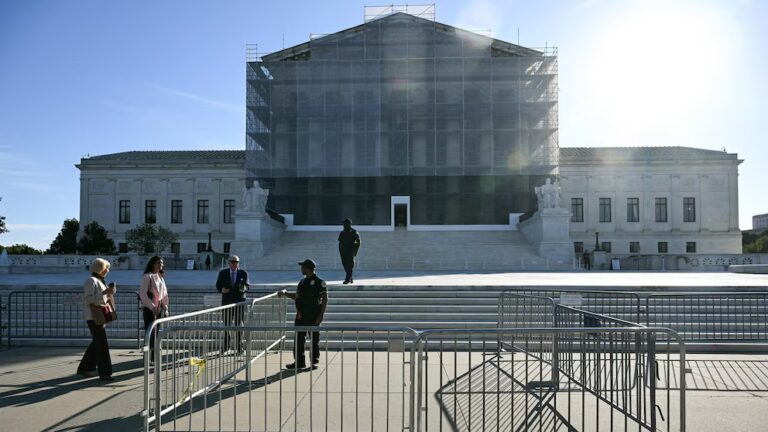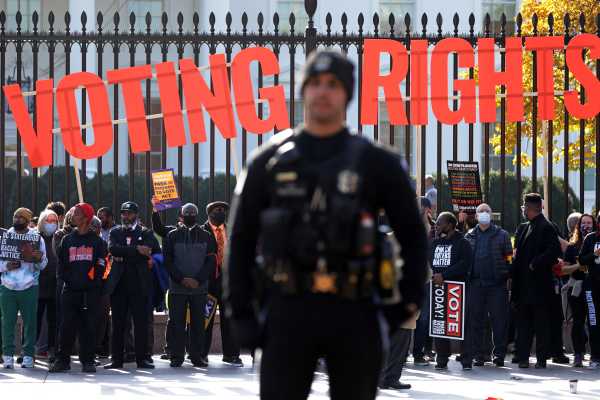
Since the beginning of 2021, dozens of states have enacted restrictive voting laws — legislation that limits how, where, and when voters can cast a ballot.
During the first two years of the pandemic, states expanded voting options, ushering in unprecedented access to the ballot via 24-hour voting, drive-through voting, mail-in ballots, ballot drop boxes, and other measures. But following Donald Trump’s defeat in 2020, the myth of voter fraud and a stolen election quickly spread. By May of 2022, nearly 400 restrictive bills had been introduced in legislatures nationwide.
In 2021, legislators in every state except Vermont introduced at least one provision restricting voting access, according to data from the Brennan Center for Justice, which tracks the legislation. Ultimately, by May 2022, 18 states had passed a total of 34 laws restricting voting.
What do you think of Vox? Tell us!
The past few years have been a whirlwind, so we want to touch base and get to know you a little better — and learn what your needs are today. Take Vox’s survey here.
An analysis by the Brennan Center’s voting rights program found that race and racial resentment, not only partisanship, play a part in the proliferation of these laws: legislative districts that scored higher on markers of racial resentment were more likely to be represented by legislators who introduced the restrictions. They were also more likely to be introduced by legislators from majority-white districts in diversifying states.
I talked to Sean Morales-Doyle, the acting director of the Brennan Center’s voting rights programs, about their analysis, the connection between election subversion and voter suppression, and why there’s still hope that voting is powerful in our democracy.
Our conversation has been edited for length and clarity.
Fabiola Cineas
What are the most glaring statistics about the vote suppression bills that have been introduced or adopted in the past two years or so?
Sean Morales-Doyle
At the Brennan Center we’ve been tracking every piece of voting rights legislation introduced in every state legislature across the country for more than a decade now.
Since the beginning of 2021 and as of our last roundup of the legislation in May 2022, 18 states have passed 34 new restrictive voting laws. 2021 was so extreme. If you look at the entire decade that we have been tracking this legislation, one out of every three restrictive laws was passed during that year.
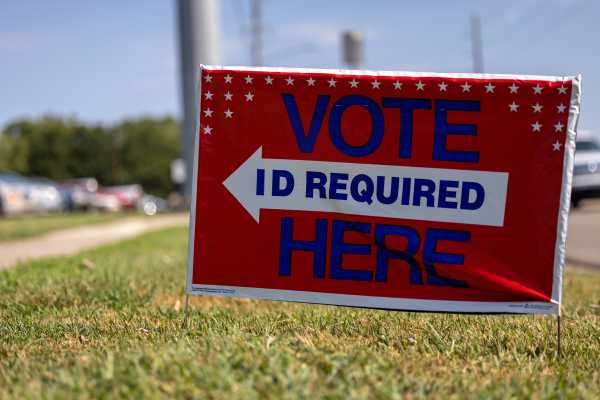
Fabiola Cineas
Are there patterns that emerge when you look at these laws together?
Sean Morales-Doyle
We’ve done a statistical analysis to figure out the patterns. We wanted to know what was predicting the introduction of this legislation. Is it just a partisan trend? Certainly, it is a partisan trend: One party by and large is responsible for distributing the legislation and the vast majority of it is introduced by Republican legislators. But we wanted to know what’s really going on here because we had a suspicion that perhaps it wasn’t that simple.
What we found is the legislators that represented the whitest districts of the most diverse states are the legislators most likely to introduce restrictive legislation. Similarly, legislators that represented districts with high levels of racial resentment were more likely to introduce the legislation. Those trends held true even after we controlled for party, even after we controlled for how competitive a district was.
Party definitely tells part of the story, but it doesn’t tell the whole story. This is also a story about race. That’s always been the case in this country, frankly. The fight over voting rights and the fight over our democracy has been a fight with race at its core. What this shows is that this continues to be the case even in this moment of hyper-partisan debate over voting rights. That story is consistent with a story of racial backlash.
What do you think of Vox? Tell us!
The past few years have been a whirlwind, so we want to touch base and get to know you a little better — and learn what your needs are today. Take Vox’s survey here.
Fabiola Cineas
Is there anecdotal evidence that supports these findings?
Sean Morales-Doyle
Yes. When Texas passed SB 1, it restricted all kinds of aspects of the voting system in a state that was already incredibly restrictive. And it targeted the methods that were used to expand access during the pandemic in Harris County, where Houston is. Harris County had 24-hour voting and drive-through voting available to voters at a time when people were scared to be gathered in polling places. Those are the forms of voting Texas decided to go after, in addition to many others — the forms of voting that voters in the largest, most diverse county of Texas were using.
Georgia has had an expanded mail voting system for a long time. It wasn’t until 2020 when who was voting by mail shifted dramatically and far more Black voters began voting by mail. Then in 2021, Georgia suddenly acted to put restrictions on mail voting. So that’s why the Department of Justice is suing Georgia over parts of that bill and claiming that it is intentionally racially discriminatory.
The larger statistical trend suggests that it is more than just anecdotal evidence.
I want to be clear: Our statistical analysis does not prove causation. We’re not claiming that for every single one of those bills we have proof that it was introduced for racially discriminatory reasons. But we think it’s telling that race seems to be such a good predictor of where these things are being introduced and that it is a predictor independent of, and above and beyond, party.
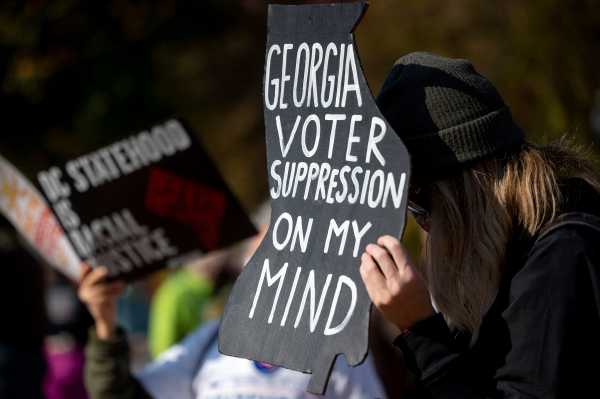
Fabiola Cineas
Can you say more about how these laws fit into the general racial backlash we are seeing, whether that’s the backlash against critical race theory or the backlash against “wokeness”?
Sean Morales-Doyle
Restrictive voting legislation is just one way that we’ve seen racial backlash in our politics over the last couple of years. We saw in 2020 people of color, and, in particular, Black people, demonstrating political power in ways that they hadn’t before. They had a real powerful impact on the political conversation heading into the 2020 elections. We saw high voter turnout across the board, among everybody in 2020, but we had high voter turnout among populations of color and we saw that voters of color were often a deciding factor in a number of races around the country.
In the period that followed, we see laws that are attempting to limit the conversation about race, and a trend in restricting access to the political power of people of color. Those two things are connected. They’re part of the same trend.
Fabiola Cineas
And what about the “big lie,” the false idea that the 2020 presidential election was stolen from Donald Trump?
Sean Morales-Doyle
The lie is motivating so much of this legislation and the lie itself has racial undercurrents. We have research linking the lies and conspiracy theories that were told about the 2020 election to the legislation passed in 2021.
Fabiola Cineas
So you’ve seen all these patterns in which states pass these laws — what did you learn from the primaries this year about how these vote suppression laws operate and affect voters?
Sean Morales-Doyle
In Texas in the March primary, thousands of mail-in ballots were rejected because of a restrictive provision of SB 1 that said you have to put either your driver’s license number or the last four digits of your social security number on your mail ballot application.
That provision is a great example of how these restrictive provisions function in 2022. It’s not the blunt instrument of the Jim Crow era that sort of knocks out a huge swath of the electorate. (Sadly, there’s still examples of that, too, like the pay-to-vote requirements in Florida.) But there are these more nuanced restrictions, and it’s about layering restriction on top of restriction.
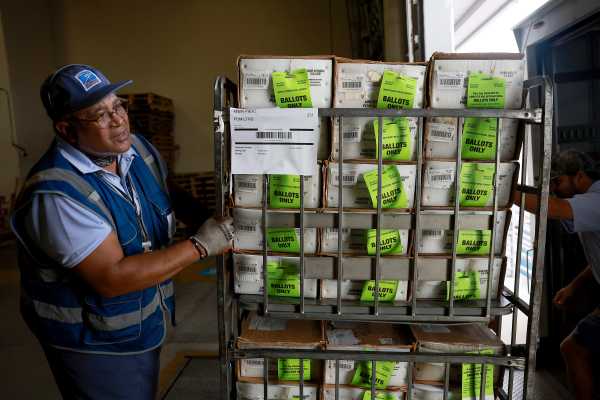
Fabiola Cineas
How do these layered restrictions work to create a bigger system that limits voters?
Sean Morales-Doyle
Look at a state like Texas where there’s already extremely limited mail voting. You have to apply to vote by mail every year, and only certain people are eligible to vote by mail. They have no online voter registration, and no online mail ballot application process. They changed the law in 2021 to require you to put this ID number on your application; that ID number has to match what’s in your voter registration record.
So if you put down your driver’s license number and it turns out your voter registration record contains your social security number, your application is going to be rejected. If you put down your social security number, and it turns out your registration record has your driver’s license number, your application is going to be rejected. If you registered at a time when you didn’t have to put down either and your registration record doesn’t contain either then no matter what number you put down your application is going to be rejected.
If the county is using the old form, or if you have an old paper form because there’s no online application, and there’s not even a place to put down the number, then your application will be rejected. You have to use paper to fix the problem because there’s no online voter registration. You may not realize that until it’s late in the game.
The same law, SB 1, makes it a crime for election officials to encourage people to vote by mail. So election officials feel constrained in what they can actually affirmatively tell voters about filling out their application because they could be accused of committing a crime. So people are deprived of the information they need.
Fabiola Cineas
There’s been high voter turnout in 2022. How do you make sense of that alongside these vote restriction trends?
Sean Morales-Doyle
There’s been really high turnout in the 2022 primaries, and that’s fantastic. We celebrate that. We love to see people participating in our democracy. But it is important to keep in mind that you can’t evaluate the impact of any particular policy just by looking at the top-line turnout numbers.
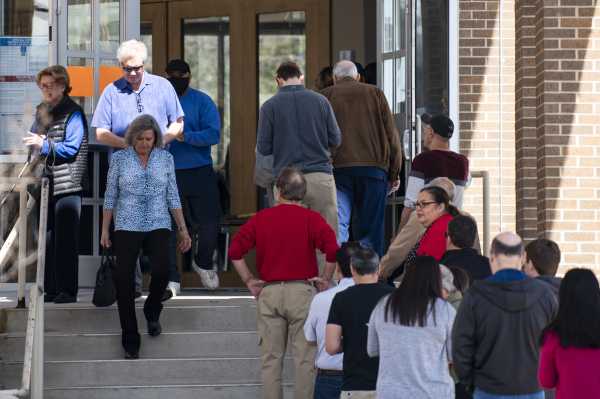
Turnout relies on many factors. And there are a lot of reasons to expect high turnout for a midterm year this year. But it also doesn’t take much scratching below the surface to see that these high turnout numbers don’t tell the whole story.
We have seen for years now that the racial turnout gap in the United States is not only persistent, but it’s actually growing in many parts of the country. And it is growing in the parts of the country that used to be covered by preclearance on the Voting Rights Act of 1965. Georgia had high turnout in the primary even after this omnibus restrictive voting law was adopted, but the racial turnout gap in Georgia’s primary was larger than it’s been in a decade.
Fabiola Cineas
How do you define the racial turnout gap?
Sean Morales-Doyle
It’s the gap between the percentage of registered white voters that turn out and the percentage of registered non-white voters that turn out. The gap we looked at in Georgia was specifically white versus Black turnout. But when you look at white versus non-white turnout — including other voters of color in that comparison — in many parts of the country, the gap is even wider. It is significantly wider for Latino voters and Asian American voters a lot of times.
Fabiola Cineas
I know you said we really don’t know what we will see in the general election come November in terms of how these vote suppression bills will play out. But what will you be keeping an eye on?
Sean Morales-Doyle
I don’t think any of us knows precisely what that impact of these laws will be. But what happened during the primaries in Texas makes me very worried.
And unlike in years past, the federal courts have signaled a retreat from the protection of voting rights. That doesn’t just include big blockbuster decisions like Shelby or Brnovich, but also includes this use of what’s called the “Purcell principle” to make it very difficult to get relief in advance of an upcoming election. The Supreme Court has basically said, “We’re not going to let federal courts step in to block state voting laws, even if a federal court finds them to be unconstitutional or a violation of the Voting Rights Act, if it’s too close to an election.” And “too close to an election” is not a very precise term. We saw the Supreme Court put a stay on a ruling out of Alabama in February because it’s “too close to the election.”
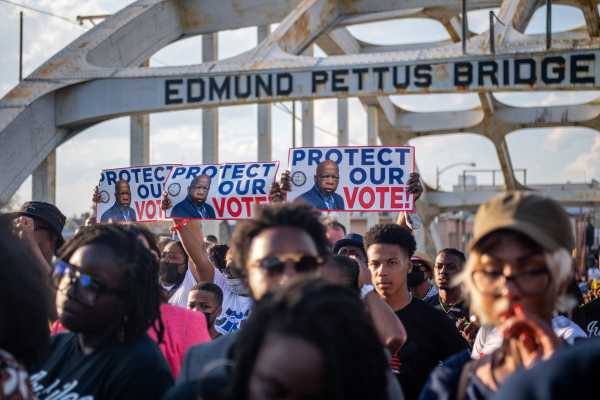
Fabiola Cineas
It feels like the national conversation has shifted more toward thinking about the threat of election subversion and we are talking less about vote suppression. Is that a fair assessment? And how should we be thinking about the connection between these two threats?
Sean Morales-Doyle
Election subversion or sabotage is different than vote suppression. But they all have the same goal, which is to undermine the will of the people and to take power away from voters. They’re different sides of the same coin.
To oversimplify it, people love a conspiracy, so the idea of election sabotage and what happened on January 6 is a narrative that people can follow. But it isn’t actually a separate thing from the attempts to restrict access to voting. The same lie that was used to justify John Eastman and Donald Trump’s attempt to overturn the presidential election is the lie that is being used to justify restrictive voting legislation. It all comes from the same place and the goal is always the same. We do a disservice when we separate them out too much.
Fabiola Cineas
What kind of confidence can voters have that there is still a reason to vote in the face of all these potential roadblocks?
Sean Morales-Doyle
There are laws in place that will make it difficult and hopefully impossible for people to sabotage elections. There are laws against voter intimidation and harassment. There are laws protecting election officials from harassment and violence. There are laws that offer some protection against restrictions.
2020 should demonstrate to all of us that we have a resilient and strong democracy in this country, that in the midst of a pandemic, in the midst of unprecedented attacks on our democracy, in the midst of people attempting to overturn the will of the people following the election and storming the nation’s capital, we carried off an election that was, by the account of the federal government, the most secure we’ve ever had.
We have institutions and rules in place that prevent the worst things from coming to fruition. I know I talk a lot about the threats, and I don’t want discussion of those threats to get voters to think that they shouldn’t be participating, shouldn’t trust the system, and that we should be scared. I think we do have reason to worry, and that’s why we’re going to be as vigilant as ever to push back against all of this nonsense. But voters should still feel confident in our democracy and should still go out and vote.
Will you support Vox’s explanatory journalism?
Millions turn to Vox to understand what’s happening in the news. Our mission has never been more vital than it is in this moment: to empower through understanding. Financial contributions from our readers are a critical part of supporting our resource-intensive work and help us keep our journalism free for all. Please consider making a contribution to Vox today.
Sourse: vox.com

